Reviews
Stanley Nelson
USA, 2006
Credits
Review by Rumsey Taylor
Posted on 08 October 2009
Source PBS DVD
Categories 31 Days of Horror VI
Jim Jones stands afore a congregation of dozens, and everyone attendant is exclaiming as if in the middle of an uncommonly inspiring hymn. Hands are expressed upward. People stand or dance in the aisles. Despite the great commotion, Jones’ voice remains the most prominent feature of the service.
He instructs an elder to remove her glasses, and to denote the number of fingers he produces on his right hand. “One,” she correctly discerns, and the crowd grows louder. He orders another, more feeble patron to stand from her wheelchair—immediately, the noise is reduced to an anxious silence. She abides with heavy caution, and swings a pendulous step forward. The congregation’s gasps grow both excited and incredulous. She takes another step, followed by a third, and then a fourth. In moments, accompanying the hallmark of the congregation’s commotion, she’s running back-and-forth in front of the pulpit. Jones observes the perceptible miracle with a gaze that has come to characterize him: his mouth closed in a half smile, his hair parted immaculately, and his eyes narrowed behind unorthodoxly fashionable sunglasses. This countenance is one of enormous pride; appropriate, given that the miracle explicitly on display in front of everyone was of his own manufacture.
Jones’ face will start to look worn and terrified some fifteen years later. The sunglasses and hair remain identical, but these fashions do not obscure the exhausted paranoia of his eyes—even behind the sunglasses, they are strenuously wide open. Jones died in 1978 at his own hand in Guyana, after years of mounting influence and paranoia in nearly equal measure, and many miles away from his home state of Indiana, as well as California, where his church - the Peoples Temple - enjoyed its highest level of participation. His body was the centerpiece of a death scene that contained over nine-hundred others.
Jonestown: The Life and Death of Peoples Temple documents this particular tragedy, but it’s one so incredible that no record is capable of justly summarizing it. There are photographs of the aftermath of the Jonestown massacre; they find a modest foreign outpost that houses a mix of black and white American residents. All of them are dead. Clusters of bodies, their arms around each other, are deducible as families. Some parents lie face-down, infant corpses trapped in their arms. These images, the horrifying extent of the bodies, the absence of any life at all, are among the most unsettling images I have seen.
The film summarizes Jones’ life, from his dysfunctional childhood in Indiana, to his own “rainbow family” (his children included one natural son, three adopted Korean-Americans, and one adopted African-American son), to his foundation of the Peoples Temple in Redwood Valley, California. The film retrospects the tendencies in Jones’ early life that preface his later menaces—his manipulation, his closeted and hostile homosexual practices, his ethical hypocrisy. Controversy shrouds the history of Jim Jones, and contextualizations of his life and his influence tend to be steeped in judgement, disapproval, incredulousness, and despair. These responses are in no means unjustified, but they draw attention away from a larger, less specific issue: that is, religion’s potential for manipulation.
Jonestown, it should be said, is a violent exception in criticism of organized religion. There have been other cult-related suicides (and I imagine many other cults exist in the US in some fashion1), but it exists as a testament to one of religion’s most impetuous side-effects: that peoples’ faith can aggregate into a collective mindstate so momentous that it is capable of compromising its members’ very principles. And it should also be noted that the Jonestown tragedy was preceded by many evaluably good things, in particular political activism, racial and sexual tolerance. This was at a time in which these characteristics were especially valuable in American culture. Upon his revocation of racism and sexism, Jim Jones built what amounts to a religion that fulfilled him above anyone else, but this fulfillment profited from other peoples’ hope, and his people hoped with perhaps greater imagination than they would have otherwise. In footage of the Jonestown residents prior to the tragedy, they appear genuinely, collectively happy. They look like they genuinely believed in what they were doing.
It is this genuine hope of the Jonestown casualties that I find to be one of the most frightening aspects of this tragedy. Jones coerced essentially the Guyana outpost’s entire population to ingest cyanide-laced Kool-Aid in an act he deemed “revolutionary suicide,” and many of them did so because they believed what they told him: that in Guyana they would manufacture their own Eden. Robbed of that Eden, they would perish with dignity2. These same people moved from their homes in the US, some of them even abandoning their families. Posturing Jones as a hypocrite, a liar, or a bigot is responsibly sensitive to the deaths of so many people, but it doesn’t sufficiently explain his most lethal characteristic: his formidable leadership.
The clusters of dead families - the infants, the ones who weren’t capable of ingesting the Kool-Aid on their own and were force-fed with syringes - spent much of their final moments believing. They believed in Jim Jones’ miracles, and Jonestown was to them another of his miracles. (Jones famously disowned the Bible in one of his sermons - by literally tossing it from the pulpit - and claiming, “Nobody’s gonna come out of the sky! There’s no heaven up there! We’ll have to make heaven down here!”) Faith of such intensity is capable of failing more precipitously than faith of a more casual temperament. This is the inherent paradox of the Jonestown tragedy, that it was designed to be a heaven and amounted to an unprecedented hell.
- Ondi Timonor made a recent film on cults in the US entitled Join Us, in which she exposes manipulative tendencies in a pastor that recall those of Jim Jones’. The extent is far less influential and hostile than that of the Peoples Temple, but the film persuasively contends that the same cult mentality is persistent in the US (which reportedly has a higher concentration of religious cults than any other country). ↩
- In this review I am omitting much of the biography of why the Jonestown massacre occurred. For curious readers, here is the comprehensive wikipedia entry: http://en.wikipedia.org/wiki/Jonestown ↩
More 31 Days of Horror VI
-

From Beyond
1986 -

The Haunting
1963 -
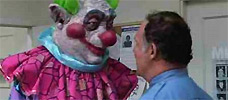
Killer Klowns from Outer Space
1988 -

Shock ‘Em Dead
1991 -

Critters
1986 -

Critters 2
1988 -

The Fall of the House of Usher
1928 -
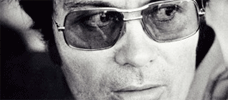
Jonestown: The Life and Death of Peoples Temple
2006 -

In the Mouth of Madness
1994 -

Winterbeast
1991 -
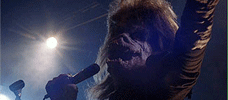
Black Roses
1988 -

Needful Things
1993 -
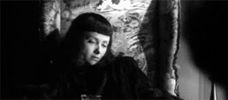
The Seventh Victim
1943 -
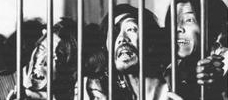
A Page of Madness
1926 -

Holocaust 2000
1977 -

The Man and the Monster
1958 -

The Texas Chainsaw Massacre 2
1986 -

Trick or Treat
1986 -

Single White Female
1992 -
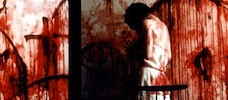
Trouble Every Day
2001 -
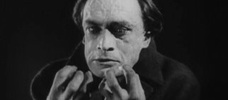
The Hands of Orlac
1924 -

The Devil’s Advocate
1997 -
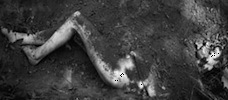
Nocturne
1998 -

Hardware
1990 -

Hard Rock Zombies
1985 -

The Slumber Party Massacre
1982 -

Saw VI
2009 -
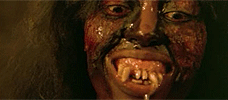
Zombi 4: After Death
1988 -
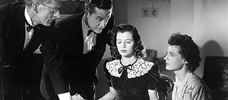
The Uninvited
1944 -

Hausu
1977
We don’t do comments anymore, but you may contact us here or find us on Twitter or Facebook.



